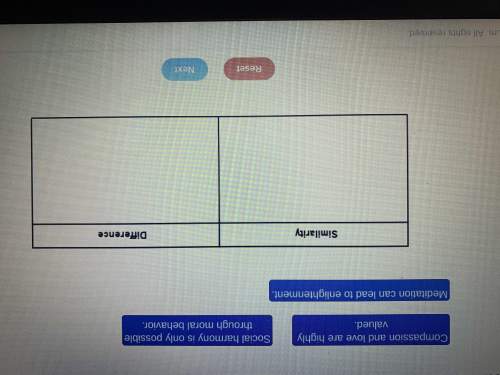
History, 10.11.2021 02:00 scottkayce
The researcher in the Milgram study used a that is, he focused on facts and logic to attain the desired behavior.
Central route for persuasion
Peripheral route for persuasion
Negative interest
Other:
2. Three components of persuasion are:
Peripheral route for persuasion
source, message and audience
Central route for persuasion
3. The researcher in the Milgram study used a central route for persuasion?
True
False
4. We are more likely to believe sources that appear honest, trustworthy, have expertise and credibility and are attractive. This known as?
Message
Source
5. Audiences who want the facts should be given the central route, others the peripheral. Know your audience and their attitudes, is known as?
Source
Message.
Audience
6. Tendency of an individual in a group to exert less effort toward attaining a common goal, is known as?
Social Loafing
Social status
Social tendency
7. De- individuation is defined as?
Loss of self-awareness and self-restraint in group situations that foster arousal and anonymity.
After disagreeing to a large initial request, a person is more likely to agree to something that seems less expensive
8. Persuasion is divided in to two routes. What are they?
Peripheral Route, Central Route
Source, Message, and audience
All of the above
9. using a central route are convincing and understandable, however, the peripheral route may appeal to people more. Fear tends to be a good technique.
Audiences
Sources
Messages
10. A group leader tends to use a peripheral route for presusaion.
True
False
11. This psychologist designed a study that investigated the effects of authority on obedience. His name is?
Stanley Milgram
Alex Zimbardo
Solomon Asch
12. In both Asch's and Milgram's studies participants were not pressured between following their standards and being responsive to others.
True
False
13. Milgram’s study, went a step forward, where participants were torn between hearing victims plead and experimenter’s orders.
True
False
14. Attitude is defined as?
The involves mind's predisposition to certain ideas, values, people, systems, institutions
relates to the actual expression of feelings, action or inaction orally or/and through body language
15. This part of psychology teaches us how we relate to one another from prejudice, aggression and conflict to attraction, altruism and peacemaking. It is Known as what type of relation?
Social Relations
Social inequity
Social stimulation
16. Prejudice is defined as an unjustifiable (usually negative) attitude toward a group and its members – often of different cultural, ethnic or gender groups
True
False
17. There are components to Prejudice.
5
4
3
18. Prejudice works at the level
Conscious
Unconscious
All of the above
19. Trouble identifying pleasant words is known as:
Unconscious patronization
Race-influenced perceptions
Implicit racial associations
20. There are 3 reasons prejudice arises. They are?
Social Inequalities
Social Divisions
Emotional Scapegoating
all of the above

Answers: 2
Another question on History

History, 22.06.2019 00:30
Brainliestttme : ) what demographic changes occurred after world war ii?
Answers: 1

History, 22.06.2019 10:30
What war was a result of militarism and nationalism in the late nineteenth and early twentieth centuries? question 1 options: civil war revolutionary war world war i cold war
Answers: 2

History, 22.06.2019 14:00
Which consumer uses the less water in the united states each year? a. livestock b.power generation c. industry and mining d. public water consumption
Answers: 2

History, 22.06.2019 19:40
What role did geography play in the development of african civilizations in the first millennium
Answers: 1
You know the right answer?
The researcher in the Milgram study used a that is, he focused on facts and logic to attain the desi...
Questions

English, 25.09.2019 12:10


Computers and Technology, 25.09.2019 12:10

Mathematics, 25.09.2019 12:10



English, 25.09.2019 12:10


History, 25.09.2019 12:10


Biology, 25.09.2019 12:10




History, 25.09.2019 12:10


History, 25.09.2019 12:10






